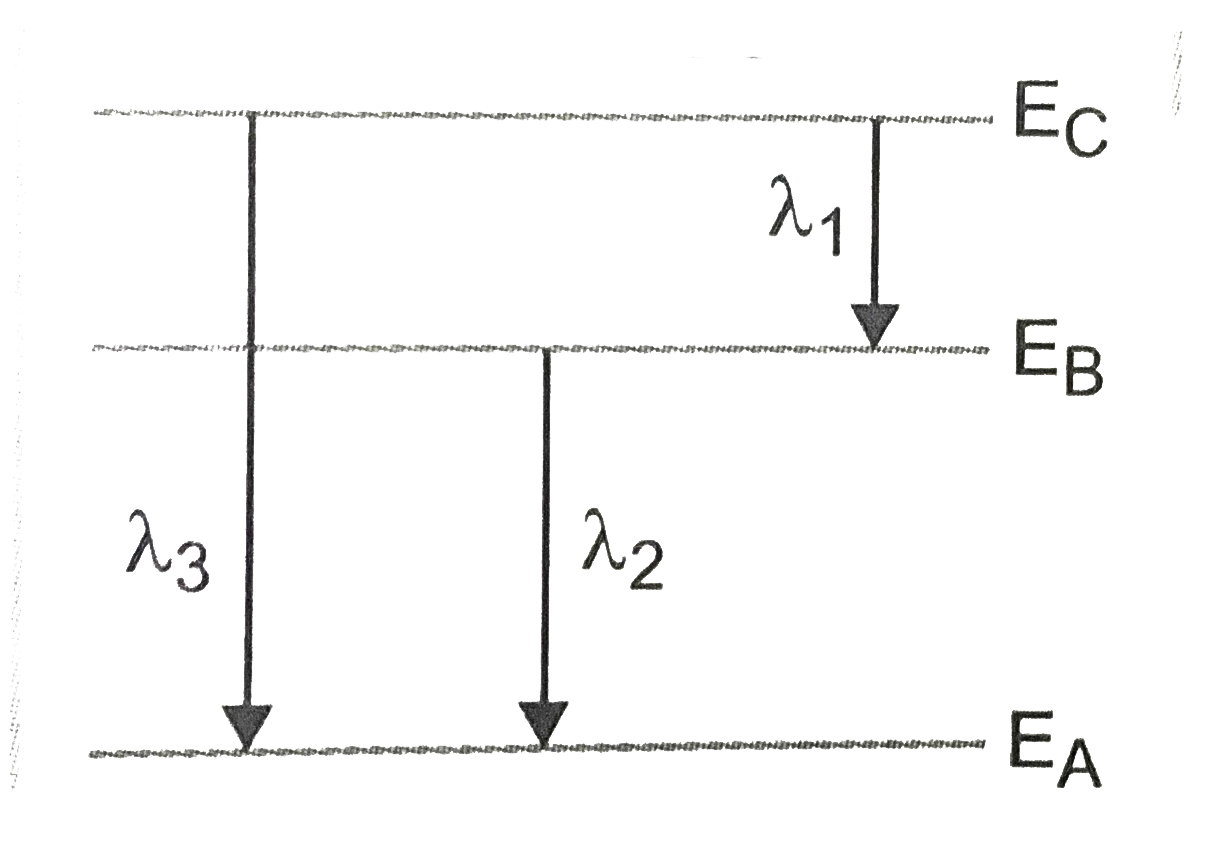If the potential difference across the Coolidge tube is increased to 1.4 time of initial potential difference the cut of wavelength of x-ray becomes 0.2 Å . The value of λ1−λ2 in this condition is 2k100Å . Find the value of k . (λ1 is initial wavelength and λ2 is final wavelength)
The correct Answer is:4
To solve the problem, we need to understand the relationship between the potential difference applied across the Coolidge tube and the cut-off wavelength of the X-rays produced. The cut-off wavelength (λ) is inversely proportional to the energy of the electrons, which is determined by the potential difference (V).
1. Understanding the relationship: The energy of the electrons accelerated through a potential difference V is given by E=eV, where e is the charge of the electron. The cut-off wavelength (λ) is related to the energy by the equation:
E=hcλ
where h is Planck's constant and c is the speed of light.
2. Setting up the initial condition: Let the initial potential difference be V and the corresponding cut-off wavelength be λ1. Thus, we have:
eV=hcλ1
3. Increasing the potential difference: When the potential difference is increased to 1.4V, the new cut-off wavelength λ2 becomes:
e(1.4V)=hcλ2
4. Relating the two conditions: From the above equations, we can express λ1 and λ2 in terms of the potential differences:
λ1=hceV
λ2=hc1.4eV
5. Finding the difference in wavelengths: We need to find λ1−λ2:
λ1−λ2=hceV−hc1.4eV
6. Factoring out common terms: Factoring out hceV:
λ1−λ2=hceV(1−11.4)
7. Calculating the fraction: The term 1−11.4 can be simplified:
1−11.4=1.4−11.4=0.41.4=27
8. Substituting back: Thus, we have:
λ1−λ2=hceV⋅27
9. Using the given condition: We know from the problem statement that:
λ1−λ2=2k100 Å
Therefore, we can equate:
hceV⋅27=2k100
10. Solving for k: Canceling 2 from both sides:
hceV⋅17=k100
Rearranging gives:
k=100hc7eV
11. Finding the value of k: We know that λ2=0.2 Å. Thus, substituting the known values and simplifying will yield the value of k.
Final Calculation:
Since we know that λ2=0.2 Å, we can substitute this value into our earlier equations to find k.
Given that hc/eV can be calculated or approximated based on known constants, we can find k numerically.
E=hcλ
where h is Planck's constant and c is the speed of light.
eV=hcλ1
e(1.4V)=hcλ2
λ1=hceV
λ2=hc1.4eV
λ1−λ2=hceV−hc1.4eV
λ1−λ2=hceV(1−11.4)
1−11.4=1.4−11.4=0.41.4=27
λ1−λ2=hceV⋅27
λ1−λ2=2k100 Å
Therefore, we can equate:
hceV⋅27=2k100
hceV⋅17=k100
Rearranging gives:
k=100hc7eV
Since we know that λ2=0.2 Å, we can substitute this value into our earlier equations to find k.
Topper's Solved these Questions
- BOOK - FIITJEECHAPTER - PHYSICS PART-IIIEXERCISE - NUMERICAL BASED QUESTIONS DECIMAL TYPE11videos
PHYSICS PART-III
- BOOK - FIITJEECHAPTER - PHYSICS PART-IIIEXERCISE - PARAGRAPH BASED (MULTIPLE CHOICE)10videos
PHYSICS PART-III
- BOOK - FIITJEECHAPTER - OPTICSEXERCISE - NUMERICAL BASED QUESTIONS2videos
OPTICS
- BOOK - FIITJEECHAPTER - PHYSICS PART2EXERCISE - Numerical Based Question Decimal Type6videos
PHYSICS PART2
Similar Questions
Knowledge Check
- Question 1 - Select One
The wavelength of electron waves in two orbits (λ1:λ2)
A25:9B5:3C9:25D3:5 - Question 2 - Select One
For the production of X rays of wavelength 0.1 Å the minimum potential difference will be
A248 KVB124 KVC12.4 KVD24.8 KV - Question 3 - Select One or More
If the potential difference of coolidge tube probucing X-ray is increased, then choose the corrent option (s).
Here, λ0 is cut off wavelength and λKaandλKβ are wavelengths of KαandKβ characteristic X-rays.Athe interval between λKα and λKβ increasesBthe interval between λKα and λ0 increasesCthe interval between λKβ and λ0 increasesDλ0 does not change
For an atom of an ion having single electron, the wavelengths observed are λ1=2unitsandλ3=3units. The value of missing wavelength λ2 is:
 View Solution
View SolutionIn a single slit diffraction experiment first minima for λ1=660nm coincides with first maxima for wavelength λ2. Calculate the value of λ2.
View SolutionAn X-ray tube operated at 30 kV emits a continuous X-ray of short wavelength limit λ=0.414Å. The value of Planck's constant is
View SolutionIn a Coolidge tube, the potential difference used to accelerate the electrons is increased from 24. 8 kV to 49.6 kV . As a result, the difference between the wavelength of Kα -line and minimum wavelength becomes two times. The initial wavelength of the Kα line is [Take hce=12.4kVÅ]
View SolutionThe work function for tungsten and sodium are 4.5eV and 2.3eV respectively . If the threshold wavelength λ for sodium is 5460Å, the value of λ for tungsten is
View Solution

